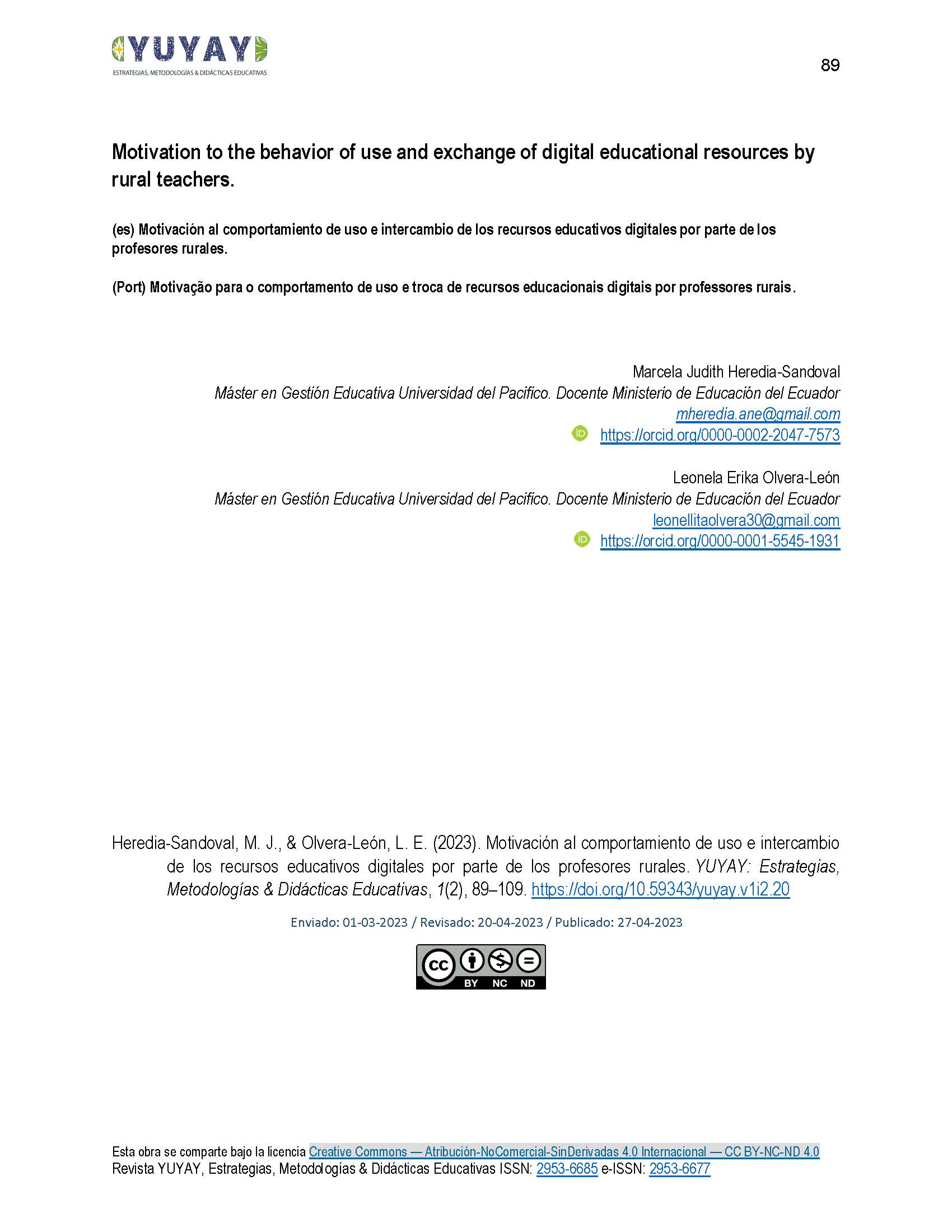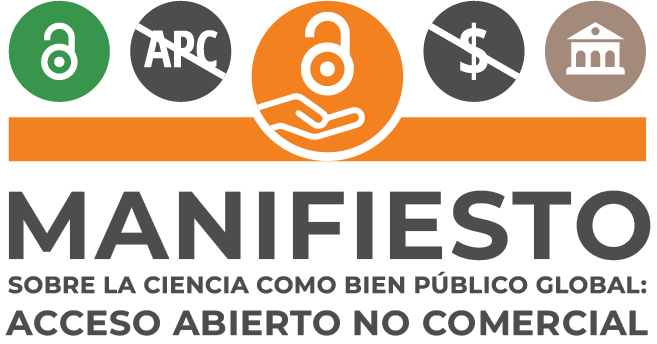Action-research study to improve vocabulary acquisition through picture description
DOI:
https://doi.org/10.59343/yuyay.v1i2.13Keywords:
English, vocabulary, semantics, linguistics, perspective, meaningful learningAbstract
The incidence of vocabulary at the level of students has been one of the components of the English language with more research, however, it was considered the need to perform a context assessment to analyze the effect of the implementation of image description on vocabulary acquisition in a specific population. The participants were ten students from an English academy (n=10). For the analysis of the data obtained, a sample survey of "mixed" type was considered through quantitative and qualitative instruments applying a survey with statements on a Likert scale, diagnostic tests and subsequent tests on vocabulary knowledge and its use in context allowing to analyze the comparison of the means in a p < .005 whose interpretation of data is statistically significant. The results of the instruments (vocabulary knowledge test and vocabulary test in context) show that the use of image description has a positive impact on vocabulary acquisition. Participants learned more words and after the intervention with a Cohen's magnitude d = 0.45 reaffirming that the confidence of "n" was better regarding the use of "known" and "new" vocabulary. The participants' perspective was positive towards vocabulary acquisition through image description. The results also represent a significant value for teachers in the area, since it recommends activities that include the description of images to contribute to a learning of vocabulary appropriate for their development and interaction.
Downloads
References
Amin, M., Rashid, R., & Teh, K. (2019). Investigating issues and challenges in employing action research for teacher training in Malaysian context. International Journal of Education and Practice, 7(1), 30-40. doi: 10.18488/journal.61.2019.71.30.40
Baralaei, S. & Najmabadi, A. (2015). The effect of using images on vocabulary learning on EFL learners. International Journal of Research on English Language Teaching Studies, 3(2), 17-19. https://www.academia.edu/31581605/The_Effect_of_Using_Images_on_Vocabulary_Learning_On_EFL_Learners
Celce-Murcia, M., Dörnyei Z. & Thurrell S. (1998). Direct approaches in L2 instruction: A turning point in communicative language teaching? TESOL Quarterly 31(1), 141–152. doi: 10.2307/3587979
Chambers, B., Slavin, R. E., Madden, N. A., Cheung, A. & Gifford, R. (2005). Enhancing success for all for Hispanic students: Effects on beginning reading achievement. Success for all Foundation. Baltimore, MD. https://eric.ed.gov/?id=ED485350
Childre, A., Sands, J. R., & Pope, S. T. (2009). Backward design. TEACHING Exceptional Children, 41(5), 6–14. doi:10.1177/004005990904100501
Christensen, R., Knezek, G., Alexander, C., Owens, D., Overall, T., & Mayes, G. (2015). Measuring 21st century skills in technology educators. In Society for Information Technology & Teacher Education International Conference (pp. 1130-1136). Association for the Advancement of Computing in Education (AACE).
Council of Europe. (2011). The CEFR language teaching assessment. https://rm.coe.int/16802fc1bf
Dalton, B., & Grisham, D. L. (2011). eVoc strategies: 10 ways to use technology to build vocabulary. The Reading Teacher, 64(5), 306-317. https://ila.onlinelibrary.wiley.com/doi/abs/10.1598/RT.64.5.1
De Temple, J., Wu, H. & Snow, J. (1991). Papa pig just left for pigtown: Children's oral and written picture descriptions under varying instructions. Discourse Processes, 14(4), 469-495. doi: 10.1080/01638539109544797
Duan, S. (2018). Effects of enhancement techniques on L2 incidental vocabulary learning. English Language Teaching, 11(3), 88-101. doi: 10.5539/elt.v11n3p88
Ellis, N. C. & Beaton, A. (1993). Psycholinguistic determinants of foreign language vocabulary learning. Language Learning, 43, 559-617. doi:10.1111/j.1467-1770.1993.tb00627.x
Education First. (2019). EF Standard English Test. https://www.ef.com.ec/
Education First. (2022). EF English Proficiency Index. https://www.ef.com.ec/epi/
Gass, S. (1999). Discussion: Incidental vocabulary learning. Studies in Second Language Acquisition 21(2), 319-333.
Ghout-Khenoune, L. (2012). The effects of task type on learners’ use of communication strategies. Procedia - Social and Behavioral Sciences, 69(1), 770–779. doi:10.1016/j.sbspro.2012.11.472
Hunt, A. & Beglar, D. (2005). A framework for developing EFL reading vocabulary. Reading in a Foreign Language, 17(1), 23-59. Retrieved from https://files.eric.ed.gov/fulltext/EJ689121.pdf
Karakoç, D. & Köse, G. D. (2017). The impact of vocabulary knowledge on reading, writing and proficiency scores of EFL learners. Journal of Language and Linguistic Studies, 13(1), 352-378. Retrieved from https://files.eric.ed.gov/fulltext/EJ1140609.pdf
Kartal, G. (2017). A corpus-based analysis of the most frequent adjectives in academic texts. Teaching English with Technology, 17(3), 3-18. https://files.eric.ed.gov/fulltext/EJ1149420.pdf
Krashen, S. (1989). We acquire vocabulary and spelling by reading: additional evidence for the input hypothesis. The Modern Language Journal, 73(4), 440-464. http://www.sdkrashen.com/content/articles/1989_we_acquire_vocabulary_and_spelling_by_reading.pdf
Lavalle, P. & Briesmaster, M. (2017). The study of the use of picture descriptions in enhancing communication skills among the 8th-grade students. Learners of English as a Foreign Language, 9(1), 1-16. https://files.eric.ed.gov/fulltext/EJ1171736.pdf
Little, D. (2005). The common European framework and the European language portfolio: involving learners and their judgements in the assessment process. Language Testing, 22(3), 321–336. doi: 10.1191/0265532205lt311oa
Ludvigsen, M. B. (2015). Vocabulary learning strategies in the L2 classroom (Master Thesis, Ostfold University, Halden, Norway).
Marulanda, A., Nora, L., & Martínez, J. M. (2017). Improving English language learners' academic writing: a multi-strategy approach to a multi-dimensional challenge. GIST Education and Learning Research Journal, (14), 49-67. doi: 10.26817/16925777.367
Ministerio de Educación. (2012). English Teacher Standards and English Language Learning Standards. http://educacion.gob.ec/wpcontent/uploads/downloads/2013/03/estandares_2012_ingles.pdf
Ministerio de Educación. (2014). National curriculum guidelines. https://educacion.gob.ec/wp-content/uploads/downloads/2014/09/01-National-Curriculum-Guidelines-EFL-Agosto-2014.pdf
Ministerio de Educación. (2016). English language curriculum. https://educacion.gob.ec/wp-content/uploads/downloads/2016/08/EFL-for-Subnivel-Superior-of-EGB-ok.pdf
Moudraia, O. (2001). Lexical approach to second language teaching. Washington, DC: ERIC Clearinghouse on Languages and Linguistics. https://files.eric.ed.gov/fulltext/ED455698.pdf
Nation, P. (2015). Principles guiding vocabulary learning through extensive reading. Reading in a Foreign Language, 27(1), 136-145. https://files.eric.ed.gov/fulltext/EJ1059712.pdf
Oxford, R. (2002). Language learning strategies in a nutshell: Update and ESL suggestions. In J.C Richards & W. A. Renandya, Methodology in language teaching: an anthology of current practice (pp. 19-25). New York, NY: Cambridge University Press.
Pigada, M., & Schmitt, N. (2006). Vocabulary acquisition from extensive reading: A case study. Reading in a Foreign Language, 18(1), 1-28. https://files.eric.ed.gov/fulltext/EJ759833.pdf
Ranjbar, T. (2016). The impact of using pictures and other graphic devices to improve EFL learners' L2 writing skill. Journal of Applied Linguistics and Language Research, 3(3), 321-336. http://www.jallr.com/index.php/JALLR/article/download/325/pdf325.
Richards, J.C. (1976). The role of vocabulary teaching. TESOL Quarterly, 10(1), 77-89. doi:10.2307/3585941
Richards, J.C. (2003). 30 years of TEFL/TESL: A personal reflection. RELC Journal, 33(2), 1-35. doi: 10.1177/003368820203300201.
Richards, J. C. (2013). Curriculum approaches in language teaching: forward, central, and backward design. RELC Journal, 44(1), 5–33. doi:10.1177/0033688212473293
Richards, J. C., & Renandya, W. A. (2002). Teaching vocabulary. In J.C. Richards & W.A. Renandya (Eds.), Methodology in language teaching: An anthology of current practice (pp. 255-257). New York, NY: Cambridge University Press.
Schmitt, N. (2000). Vocabulary in language teaching. New York, NY: Cambridge University Press. doi: 10.1177/1362168808089921
Schmitt, N. (2008). Review article: Instructed second language vocabulary learning. Language Teaching Research, 12(3), 329-363. doi: 10.1177/1362168808089921.
Samuels, S. J. (1970). Effects of pictures on learning to read, comprehension and attitudes. Review of Educational Research, 40(3), 397–407. doi:10.3102/00346543040003397
Swenson, E. (2017). Using social Interaction to elevate end enrich student expressive vocabulary in writing. https://digitalcommons.hamline.edu/cgi/viewcontent.cgi?article=5279&context=hse_all
Tang, Z. (2020). A review on studies into incidental vocabulary acquisition through different input. English Language Teaching, 13(6), 89-95. doi: 10.5539/elt.v13n6p89
Tomlinson, B. (2013). Second language acquisition and materials development. In B. Tomlinson (Ed.), Applied linguistics and materials development (pp. 61-74). New York: Bloomsbury.
University of Cambridge (2011). Using the CEFR: principles of good practice. ESOL Examinations. Retrieved from: https://www.cambridgeenglish.org/Images/126011-using-cefr-principles-of-good-practice.pdf
University of Cambridge Local Examinations Syndicate (2012). Vocabulary list, Key English Test (KET), Key English Test for Schools (KETfS). https://www.cambridgeenglish.org/Images/22105-ket-vocabulary-list.pdf
Willingham D. & Price D. (2009). Theory to practice vocabulary instruction in community college developmental education reading classes: What the research tells us. Journal of College Reading and Learning, 40(1), 91-105. doi 10.1080/10790195.2009.10850326.
Zarfsaz, E., & Parisa, Y. (2021). The impact of different context levels on vocabulary learning and retention. Shanlax International Journal of Education, 9(4), 24-34. https://doi.org/10.34293/education.v9i4.4049
Zerkina, N., Kostina N., Urazayeva N., Lomakina Y., Emets T., Gallyamova M., Melnikova E., Trutnev A., Lukina O. (2016). Axiological role of English adjectives in English Language Teaching. International Journal of Environmental & Science Education, 11(2), 5146–5154. https://files.eric.ed.gov/fulltext/EJ1115601.pdf

Published
How to Cite
Issue
Section
Categories
License
Copyright (c) 2023 Pamela Victoria Guevara-Torres, María Rossana Ramírez-Ávila

This work is licensed under a Creative Commons Attribution-NonCommercial-NoDerivatives 4.0 International License.
You are free to:
Share — copy and redistribute material in any medium or format.
- Licensor cannot revoke these freedoms if you follow the terms of the license.
Attribution — You must give credit appropriately, provide a link to the license, and indicate if any changes have been made. You may do so in any reasonable way, but not in a manner that suggests that you or your use are supported by the licensor.
NonCommercial — You may not use the material for commercial purposes.
NonDerivatives — If you remix, transform, or create from the material , you may not distribute the modified material.
No additional restrictions — You may not apply legal terms or technological measures that legally restrict others from making any use permitted by the license.






















